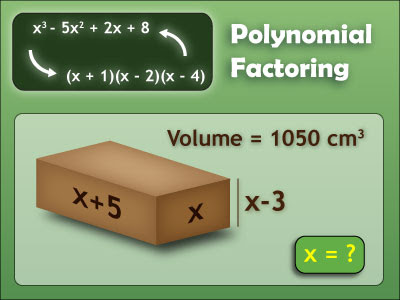A parabola is the set of all the points whose distance from a fixed point in the plane are equal to their distances from a fixed line in the plane. The fixed point is called the focus and the fixed line is the directrix.
.directrix
Formula for parabola ;-
(1) y2 = 4px has symmetry around x axis Directrix x + p = 0 Latus rectum LL' is 4p vertex = (0,0)
(2) y2 = -4px has symmetry around the negative side of x-axis Directrix x - p = 0 . LL' = 4p. Vertex =(0,0)
(3) x2 = 4 py has symmetry around the positive y - axis Directrix y + p = 0. LL' = 4p. Vertex =(0,0)
(4) x2 = -4py has symmetry around the negative y - axis. Directrix y - p = 0. LL' = 4p. Vertex= (0,0)
Problems on Parabola:
Here is a parabola math problem for us to do.
# Find the focus , vertex, axes, directrix of the parabola y2 - 4x - 4y = 0
Sol:-
parabola
Step 1 : Let us bring the above given parabola equation to the parabola formula equation.
y2- 4x - 4y = 0
Step 2 : Add 4x to both sides + 4x + 4x
We get y2 - 4y = 4x
Step 3 :Complete the square on LHS we write y2 - 4y +4 = 4x + 4 ( we add 4 to both sides of the equation to balance it)
Step 4 : Now we get (y - 2 )2 = 4(x+1)
Step 5 : Let us compare the above equation to the general equation Y2 = 4 pX
we get Y = y-2 and X = x+1. Hence Y2 = (y -2)2 and 4px = 4(x+1) . Hence we get p = 1
Step 6 : Now let us set a table for both the values. Now x = X - 1 and y = Y + 2
____________________________________________________________________________
Referred to X and Y axes Referred to x and y axes
____________________________________________________________________________
focus S = (p,0) x = X - 1 = 1 -1 = 0; y = Y +2= 0 + 2 = 2
So focus is (0,2)
____________________________________________________________________________
vertex is (0,0) x = X - 1 => 0 - 1 = -1 and y = Y + 2 = 0+2 =2
So vertex = (-1,2)
____________________________________________________________________________
axes Axis of parabola Y =0 Axis of the parabola is y = Y+2 = 0+2 =2
so axis is y - 2 = 0
____________________________________________________________________________
equation of the directrix is equation of the directrix is x + 1 = -1
x = -p that means X = - 1 which gives us x + 2 = 0
____________________________________________________________________________
Hence for the given parabola y2 -4x - 4y = 0 we have (1) Focus as (0,2) ;
(2) Vertex is (-1,2)
(3) Axis of the parabola is y = 2
and (4) directrix is x + 2 = 0
Condition for a Line to be a Tangent for a Parabola:-
Let us find the condition for a line lx + my + n = 0 to be a tangent to the parabola y2 = 4ax
Solution:-
The condition that a line y = mx + c to be a tangent to the parabola y2 = 4ax is that C = a/m...(1)
Step 1 : Let us write lx + my + n = 0 in the form y = mx + c
That gives us my = -lx - n
y = [ -l]x + [ -n]
m m
Step 2 : Now we have y = mx + c => y = (-l/m) x + ( -n/m) That is slope = -l/m and y intercept C = -n/m
Hence C = -n/m and m(slope) = (-l/m)
Step 3 But C = a / m (formula)
So we write -n = a = - am
m (-l/m) l
Step 4 Hence we get - n = -am
m l
Step 5 : Cross multiplying we get -nl = -am2
Step 6 : That gives us nl = am2
Hence the condition that lx + my + n= 0 to be a tangent to the parabola y2 = 4ax is nl = am2


